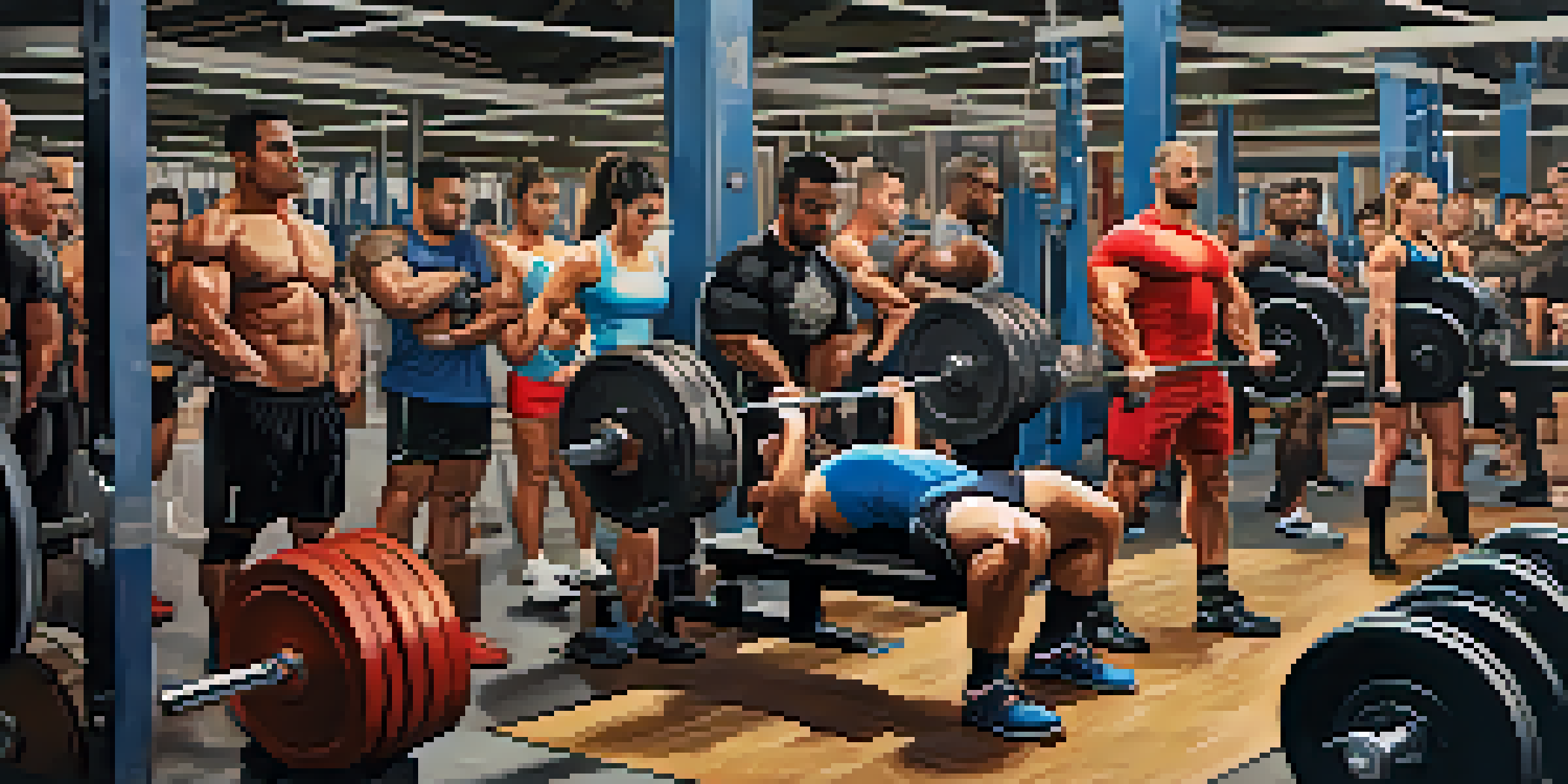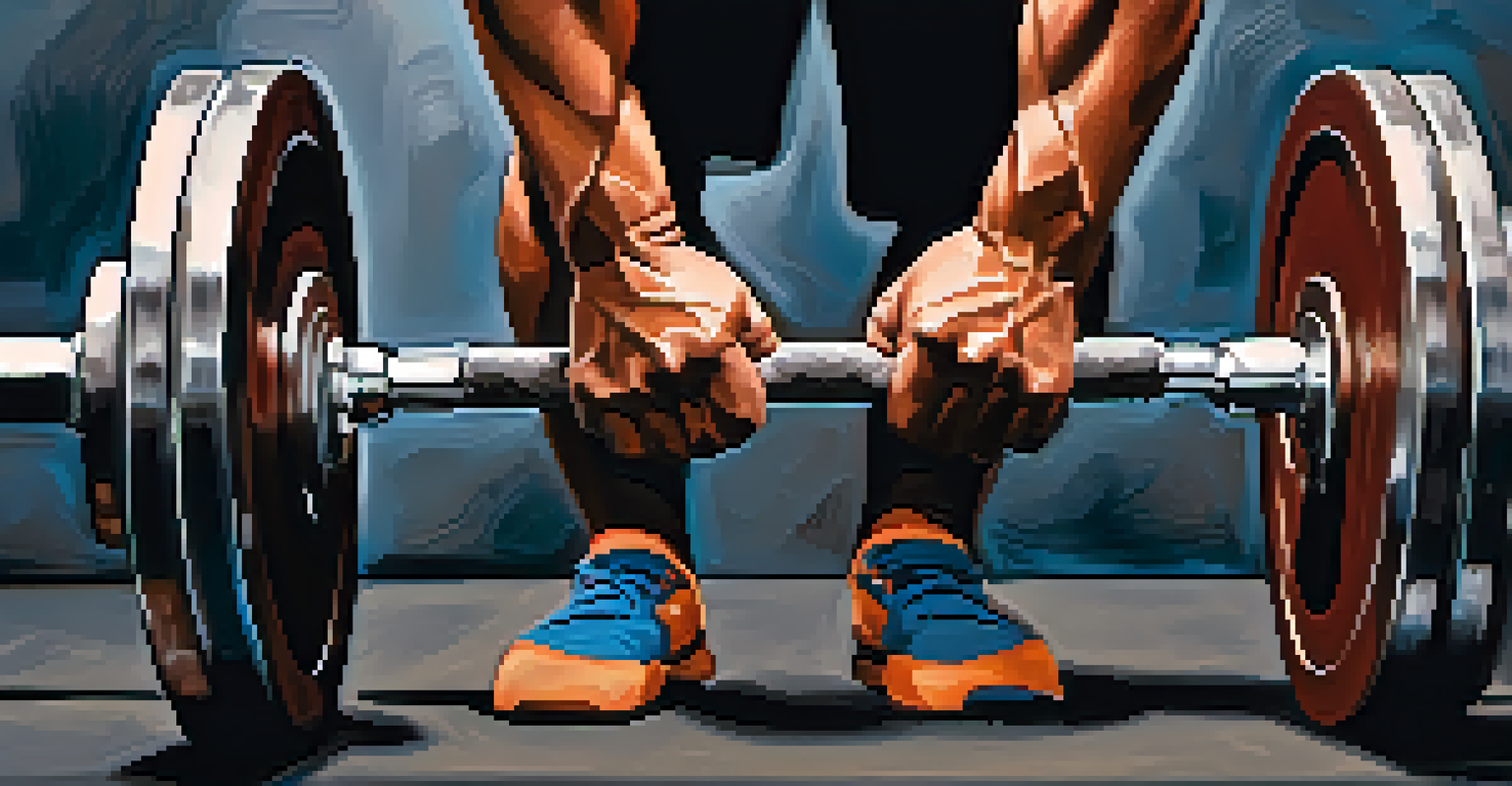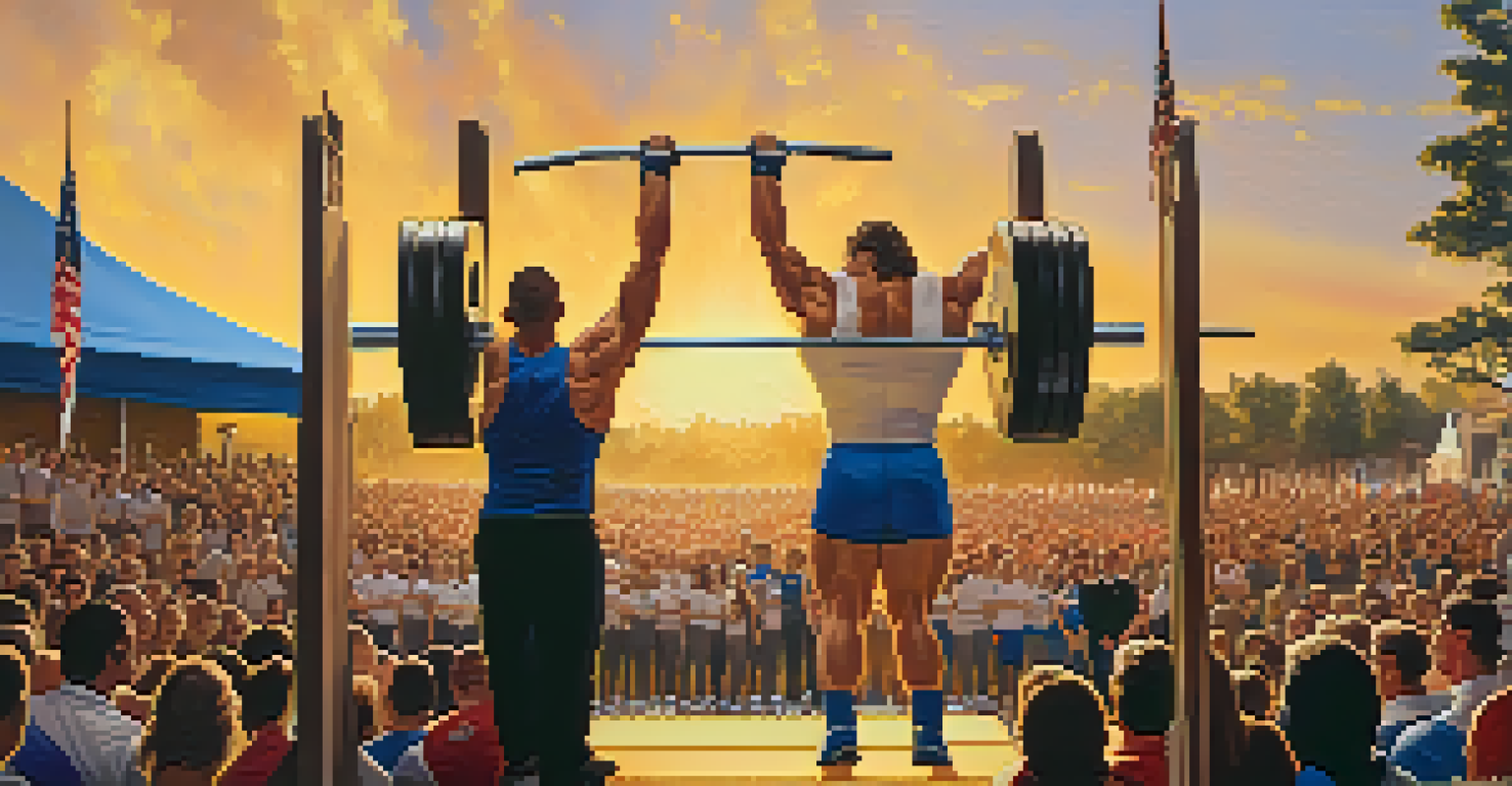Key Principles of Strength Training for Powerlifting Athletes

Understanding the Basics of Powerlifting Training
Powerlifting focuses on three primary lifts: the squat, bench press, and deadlift. These movements test raw strength and require a solid foundation of technique. Understanding the mechanics of each lift is crucial for maximizing performance and minimizing injury risk.
The only bad workout is the one that didn’t happen.
New athletes often jump into heavy lifting without grasping the fundamental techniques. This can lead to improper form, which not only affects strength gains but can also lead to long-term injuries. Therefore, it's essential to start with lighter weights and prioritize mastering each lift's form.
Integrating proper warm-up routines and mobility exercises is another vital aspect of powerlifting training. These practices prepare your body for the demanding lifts ahead, enhancing your performance while reducing the likelihood of injury.
Importance of Progressive Overload in Training
Progressive overload is the principle of gradually increasing the weight, frequency, or intensity of your workouts. This is essential for strength gains, as your muscles need to be continually challenged to grow. By applying this principle, athletes can avoid plateaus and make consistent progress.

Powerlifters often utilize different forms of progressive overload, such as increasing the weight lifted or adding more sets and reps over time. It's important to make these adjustments systematically to allow your body to adapt and recover appropriately.
Focus on Technique and Form
Mastering proper technique is crucial for maximizing strength gains while minimizing injury risk in powerlifting.
Monitoring your progress through training logs can help ensure you’re following a progressive overload plan. This not only keeps you accountable but also provides insight into what works best for your body’s unique response to training.
The Role of Nutrition in Powerlifting Performance
Nutrition plays a pivotal role in a powerlifter's performance and recovery. Fueling your body with the right nutrients can enhance strength, increase energy levels, and promote muscle recovery. A balanced diet rich in protein, carbohydrates, and healthy fats is vital for optimal performance.
Strength does not come from physical capacity. It comes from an indomitable will.
Many athletes overlook the importance of hydration, which is equally crucial. Dehydration can lead to decreased strength, stamina, and focus during workouts. Make it a habit to drink water consistently before, during, and after training sessions.
Incorporating meal planning can also support your training goals. Preparing meals in advance helps ensure you consume the right nutrients at the right times, which can significantly impact your training outcomes.
The Significance of Rest and Recovery
Rest and recovery are often underestimated in strength training, yet they are vital for muscle growth and performance. When you lift weights, you're actually causing small tears in your muscle fibers. It's during the recovery phase that these fibers repair and grow stronger.
Adequate sleep is one of the most important factors in recovery. Aim for 7-9 hours of quality sleep each night to help your body repair and regenerate. Additionally, incorporating rest days into your training schedule is essential for preventing burnout and overtraining.
Progressive Overload is Key
Consistently increasing the intensity of workouts through progressive overload is essential for continued strength development.
Utilizing techniques like active recovery, stretching, and foam rolling can also aid in speeding up the recovery process. These practices help alleviate muscle soreness and improve flexibility, allowing you to return to your training stronger.
Mental Toughness and Focus in Powerlifting Training
Mental toughness is a critical component of success in powerlifting. The sport requires not only physical strength but also the ability to push through discomfort and maintain focus during intense training sessions. Developing a strong mental game can enhance your performance and help you overcome challenges.
Visualization techniques can be particularly helpful for powerlifters. By picturing yourself successfully completing lifts in your mind, you can build confidence and improve your focus when it’s time to perform. This mental practice can be a game-changer, especially during competitions.
Setting realistic goals and celebrating small achievements can also bolster your mental resilience. Acknowledging your progress, no matter how small, can keep you motivated and focused on your long-term aspirations in the sport.
Incorporating Accessory Exercises for Overall Strength
While the squat, bench press, and deadlift form the core of powerlifting, accessory exercises play a significant role in strengthening supporting muscles. These exercises target specific muscle groups that contribute to your main lifts, enhancing your overall performance.
For instance, incorporating exercises like lunges, tricep extensions, or Romanian deadlifts can improve your stability, balance, and muscular endurance. They balance out your training regimen and help prevent injuries by ensuring all muscle groups are developed evenly.
Nutrition and Recovery Matter
A balanced diet and adequate rest are vital for enhancing performance and supporting recovery in powerlifting.
Aim to include accessory movements that focus on both pushing and pulling muscles. This balanced approach will not only assist in improving your main lifts but also contribute to better overall body mechanics and injury prevention.
The Importance of Technique and Form in Lifting
Proper technique and form are the backbone of effective strength training. In powerlifting, executing lifts with correct form is essential for maximizing strength and minimizing the risk of injury. Even a slight deviation in technique can lead to significant consequences, especially under heavy loads.
Regularly working with a coach or experienced lifter can provide valuable feedback on your form. They can help identify any weaknesses or bad habits that may be hindering your progress. Video analysis can also be an effective tool, allowing you to observe and correct your own technique.

Additionally, practicing drills that isolate specific aspects of each lift can reinforce proper form. Focusing on components like grip, stance, and breathing will enhance your overall lifting performance and ensure that you're building strength safely.